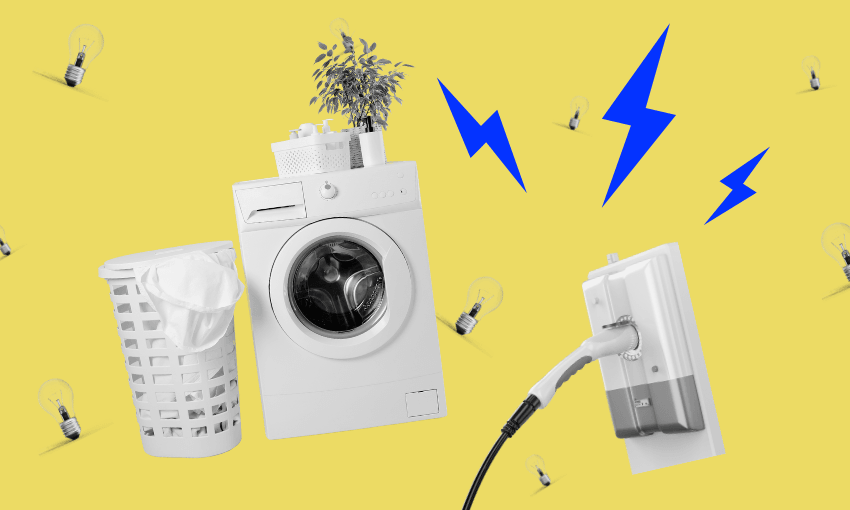It’s not just about how much power you use, but when.
New Zealand runs on renewable energy sources most of the time. Around 80% of our electricity comes from renewable sources like hydroelectric dams, geothermal power plants, wind and solar farms. But what happens when we need more power than nature can serve up?
This can happen during “peak power” hours – those times just before and after the standard 9 to 5 workday. Lots of New Zealanders run on a similar daily schedule – hot showers, toasters and kettles run full steam in the morning, then heat pumps, ovens, dishwashers, TVs and gaming consoles crank in the after-work hours.
When the whole country, or a big chunk of it, plugs in all at once like this, electricity demand peaks. To keep everything running smoothly, New Zealand often tops up the supply with energy from fossil fuels like coal, gas and diesel.
That’s not a great outcome for the environment is it?
No, it’s not. But there are ways to flatten the demand curve at peak times and reduce our reliance on fossil fuels.
How do we flatten the demand curve at peak times? By sitting around in the dark or taking cold showers?
Those things would (technically) help. But no, we don’t need to return to the stone age to reduce electricity demand at peak time. We do, however, need to load-shift.
What’s load-shifting?
Contact Energy’s product and innovation manager, Justine Bouzaid, sums it up: “Load-shifting is a bit of industry lingo for doing things later in the day, to move some of your electricity usage to outside of peak times.”
How can I load-shift?
“There are some easy tricks,” Bouzaid says. “Instead of popping on the dishwasher straight after dinner, put it on just before bed in the late evening so it’s running in off-peak times.” It’s not about giving up the dishwasher, washing machine or dryer, it’s about small behaviour changes that don’t cost anything, but can impact demand in those critical times. Lots of appliances have delayed start functions, so you don’t even need to stay up late to press go.
Sounds easy enough! But what if I’m a heavy electricity user? Or an EV driver?
At the moment, New Zealand has a relatively low proportion of electric vehicles. Getting an EV though and saying goodbye to sky-high petrol prices can be a win for your wallet and the planet. But, Bouzaid says, when you charge an EV from flat, you could be using up to six households worth of electricity.
“You’re still coming out on top versus buying petrol but when you charge your EV can make a difference to electricity demand,” she says. Remember those peak times? If EV owners can avoid charging when they get home from work and plug in overnight instead, it’s more likely that they’ll be recharging when New Zealand isn’t using those fossil fuels.
I’ve always tried to be conscientious about how much power I use. But I’ve never considered the timing of that usage. Sounds like it’s part of being a little more sustainable at home?
“One hundred per cent. If we want to reduce our reliance on fossil fuels and stick to renewable energy sources, then we should always be thinking about peak energy use,” Bouzaid explains.
Running the dishwasher later, washing your clothes overnight, all of these little load-shifting actions are examples of things you can do at home to be more sustainable. And they don’t cost you anything. If you’re able to make these small changes to when you’re using electricity, you’re helping New Zealand to be less reliant on fossil fuels.
Great to know. Now, not to make it about money, but you said these changes could help the planet and save me money. How?
If you want to cash in on these small changes, you’ll need an off-peak plan, explains Bouzaid. “Contact’s Good Plans offer households free or discounted power in off-peak times, so you’re rewarded for shifting when you use electricity. The more energy use you can shift to the free or discounted times, the more you can save.”
Exactly how much you can save comes down to how much energy you can shift into off-peak times. Since launching in 2021, more than 130,000 households have taken advantage of Contact’s Good Plans, collectively receiving more than 215 million hours of free or discounted power.

